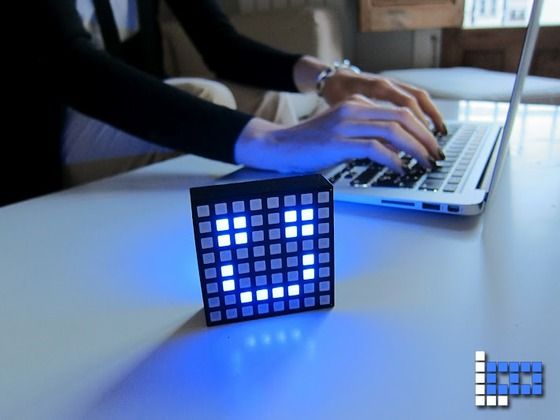
You know those single-purpose notification gadgets home tinkerers have been making since Arduinos were unleashed to the mass market? Someone finally came up with a multi-purpose one that even regular mopes might find useful: the L8 Smartlight.
What is it? It’s basically a box with an 8 x 8 matrix of LED panels right on its face. Each square can be programmed to light up in a different color, forming 8-bit shapes and characters. When paired with your smartphone via Bluetooth, that matrix can be used as a graphical tool for alerting you of various events that take place, so you can put your phone on silent without ever missing a single alert.
The L8 Smartlight measures 2.4 x 2.4 x 0.8 inches, so it should be small enough to sit on a corner of your desk without getting in the way of your work. Aside from responding to smartphone events, the device can respond to temperature, luminosity and proximity changes, with corresponding sensors for them installed right inside the box.
It comes with software that lets you program the device to display specific 8-bit patterns according to simple “if-then” rules, complete with a graphical interface that makes the process usable for even the most programming-averse individuals. For example, you can make it display a Twitter logo if you receive a new DM; you can have the LEDs blink in an epileptic frenzy if you receive a call; or you can turn all the LEDs off as soon as it senses you’ve left the room. The gadget is open to developers, too, so more dedicated tinkerers can have a field day creating custom uses for it.
Currently listed as a Kickstarter project, the L8 SmartLight is about halfway through being funded. A $69 pledge will reserve you one unit.





